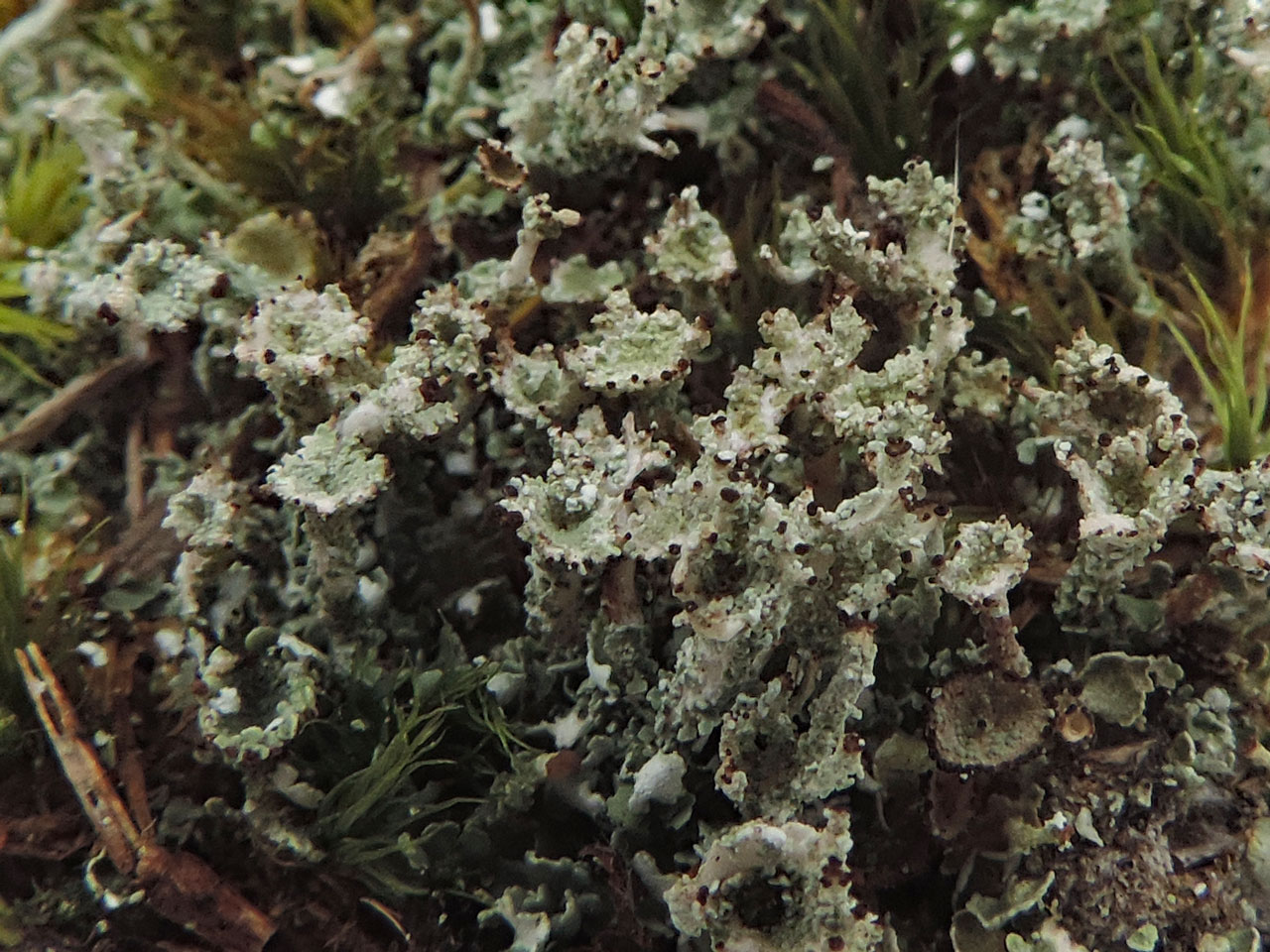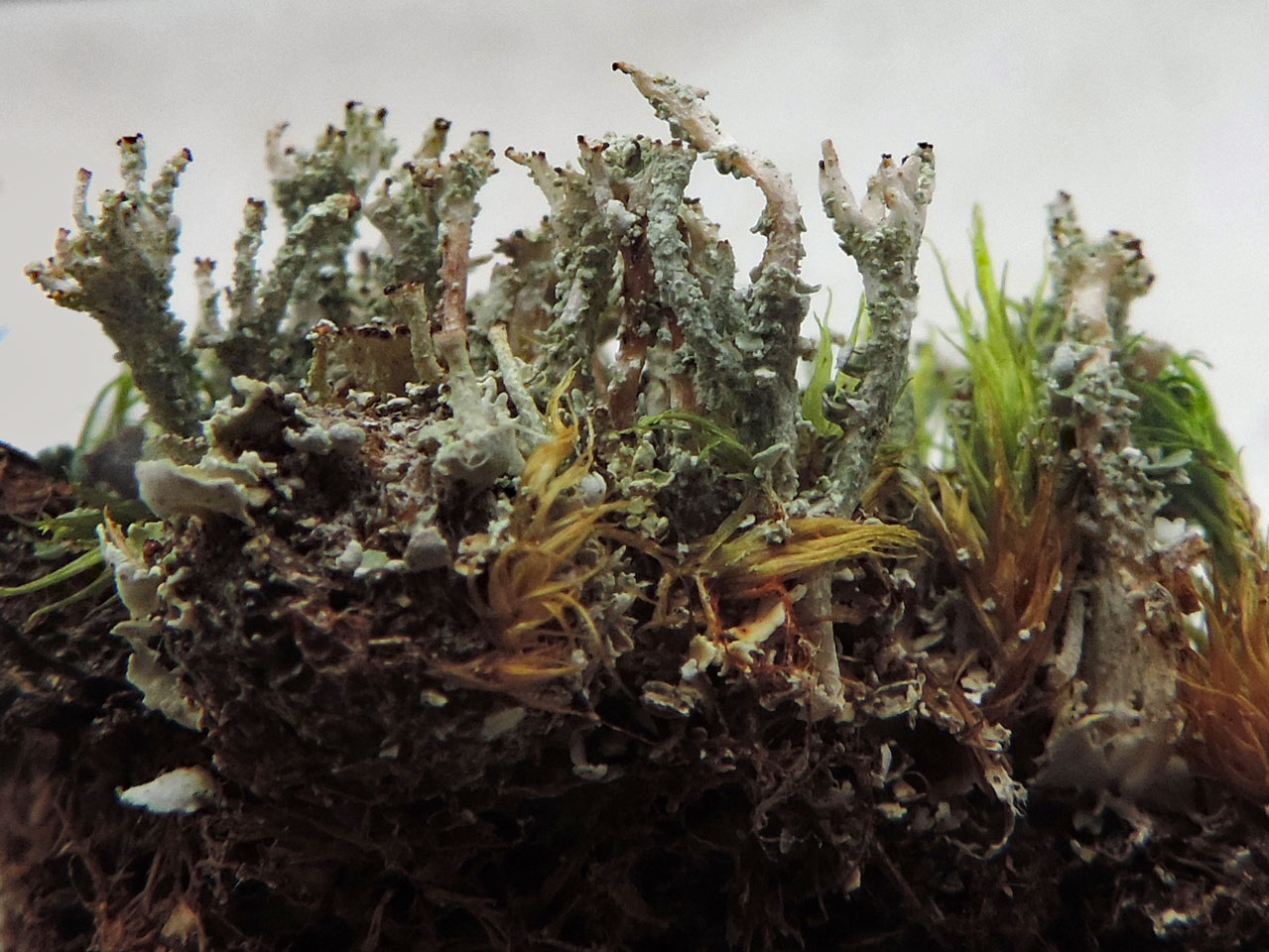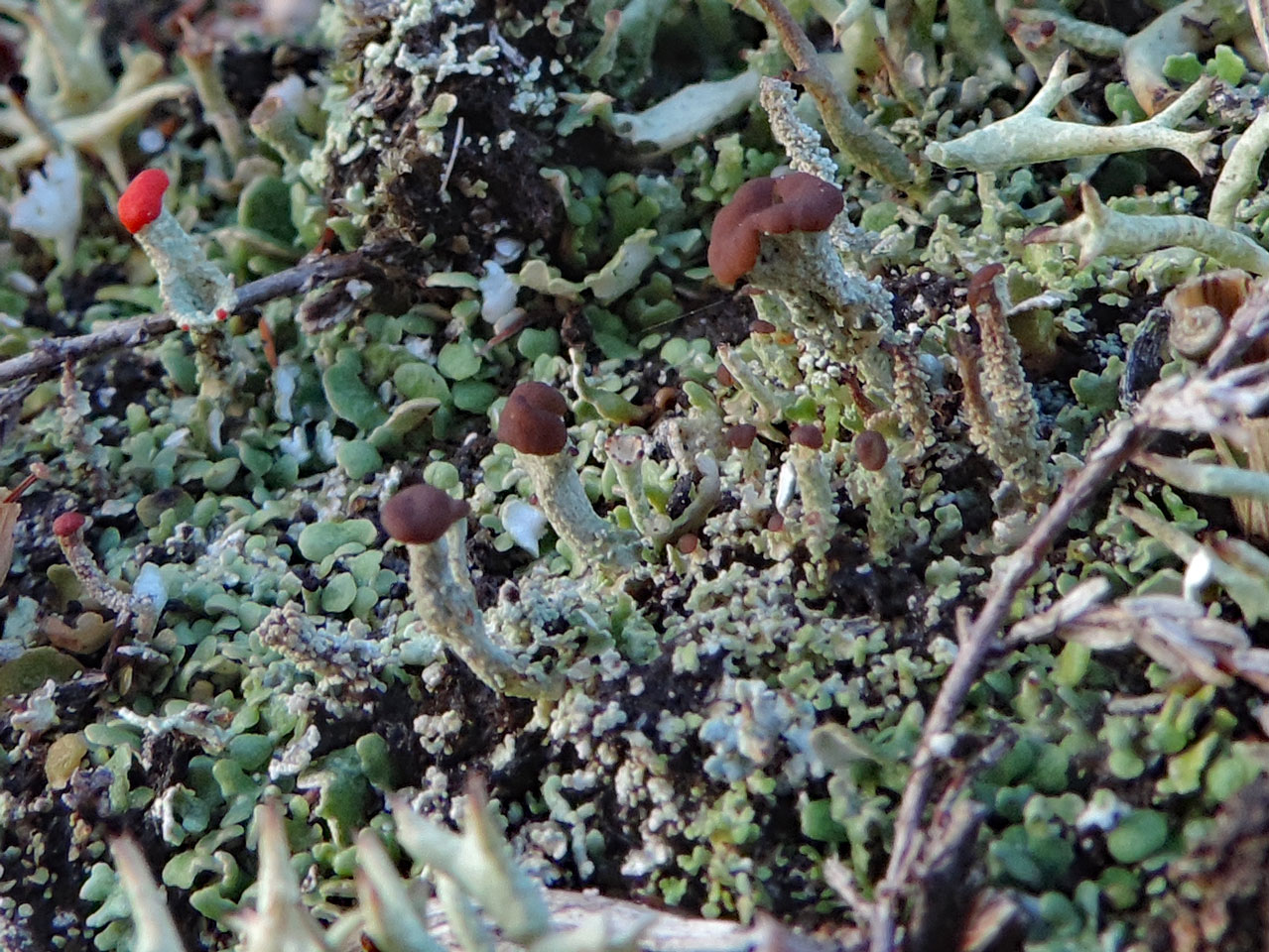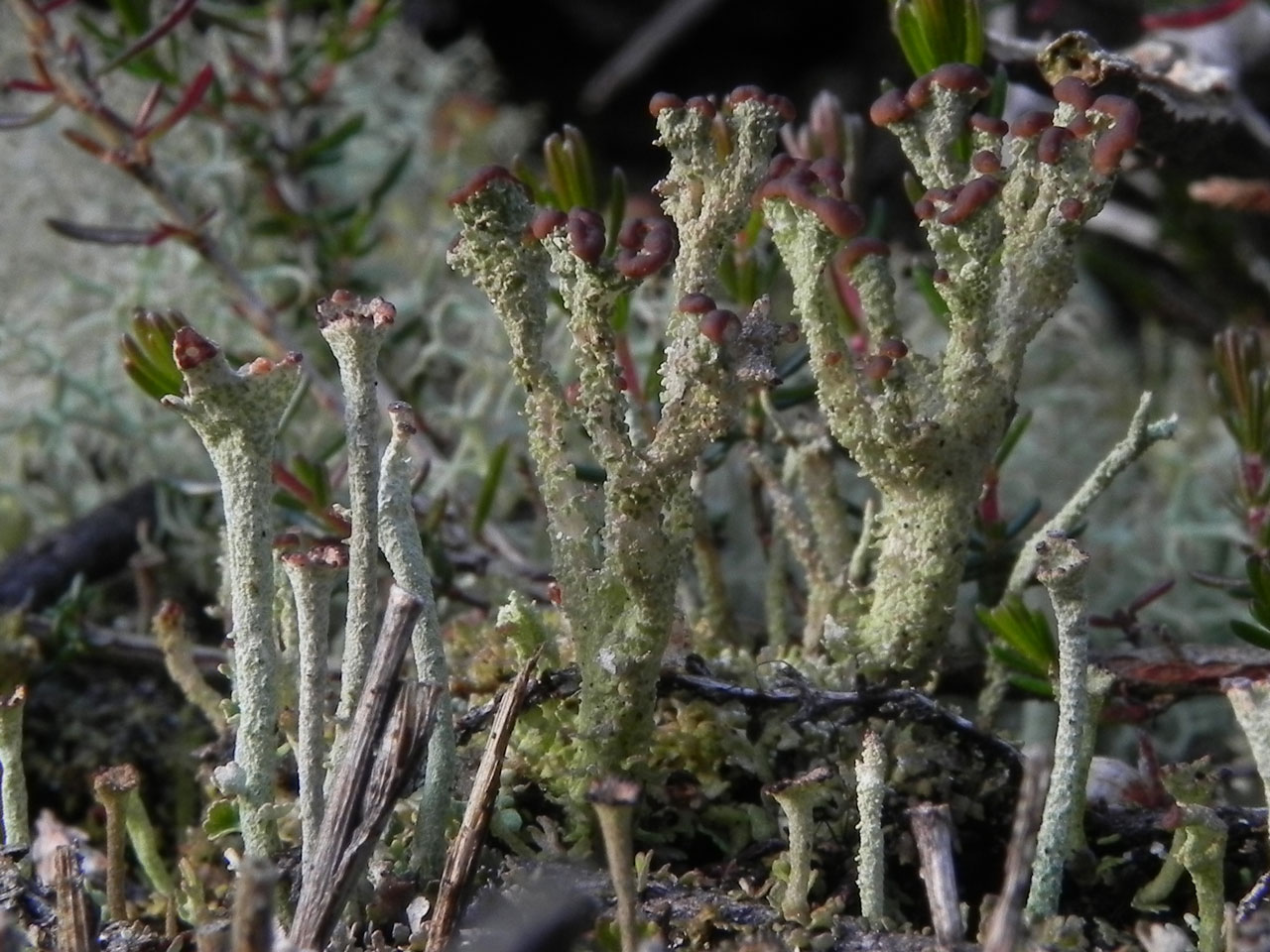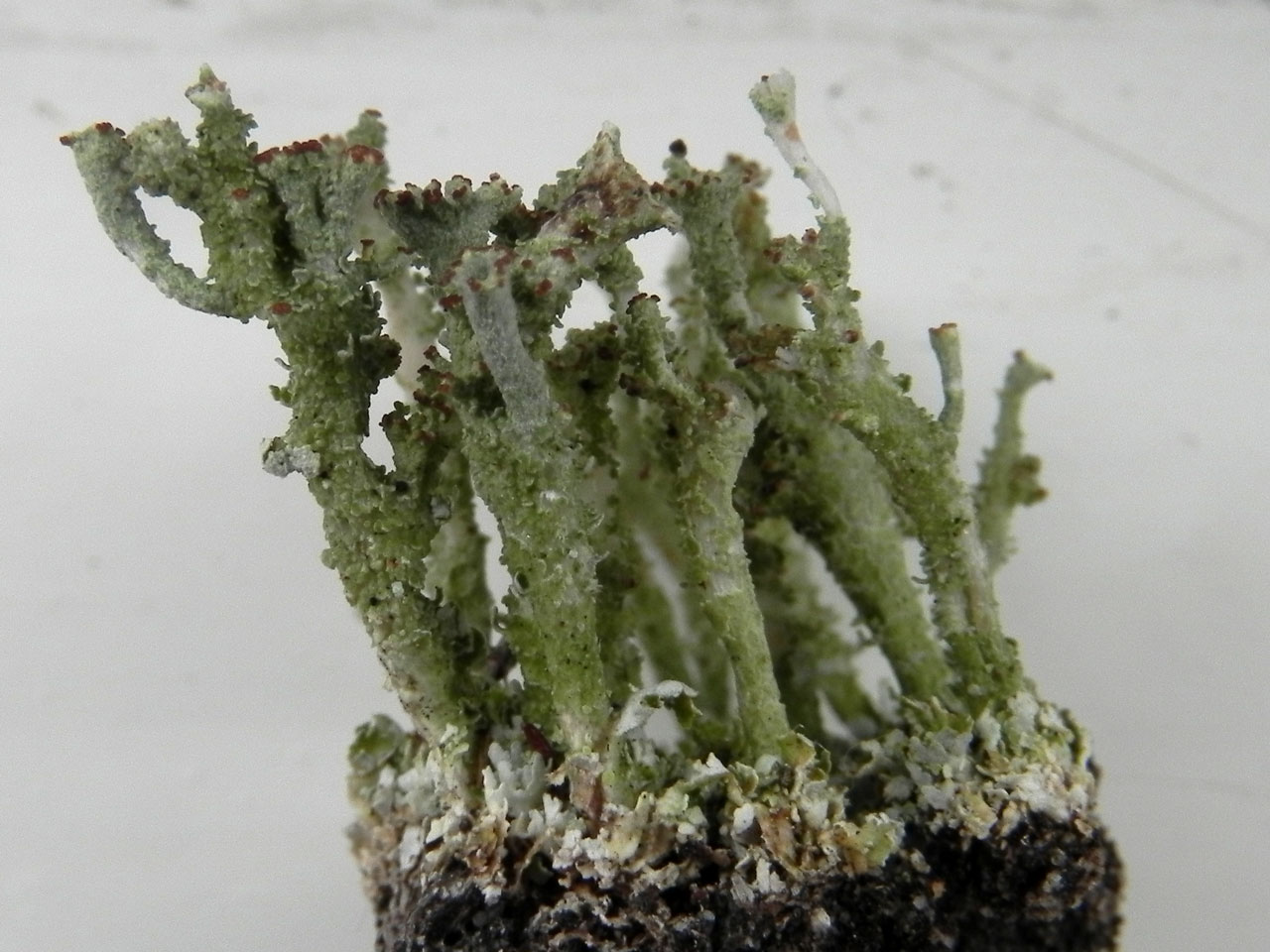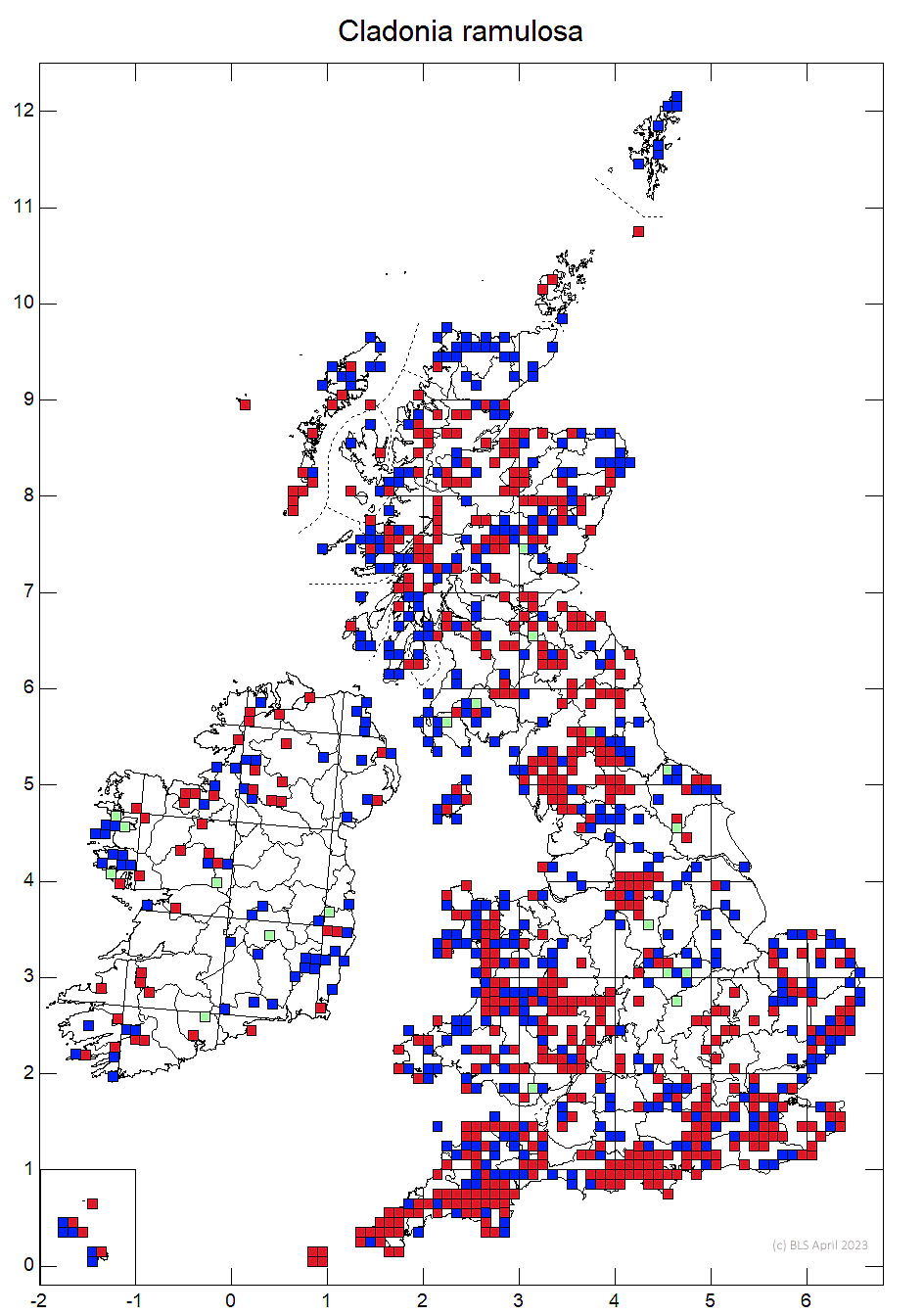A widespread, rather scruffy Cladonia, found in a wide range of acid to neutral habitats, on soil, humus decaying vegetation and wood. Easily confused with other species but a combination of characters picks it out. These include small yellowish indented brittle basal squamules, short podetia with a cracked, and peeling cortex, often with extensive decorticate areas developing, and blunt or irregular obscure cups on apices with clusters of ± contiguous apothecia, which become notably swollen pellucid-turgid when wet.
Podetia 1–3.5 cm tall, green-brown, very variable, with pointed subulate apices or irregular lopsided poorly developed narrow cups, not or sparingly branched towards the apices; surface variously squamulose, in part granular-scabrid or at times partially or almost entirely decorticate, rarely with a few scattered granular soredia. Basal squamules small, often yellowish green-grey when wet, elongate and indented, sometimes densely tufted, fragile (easily broken by rubbing with a finger when dry), the lower surface white, rarely with soralia. Sometimes the thallus may be reduced to a compacted, densely minutely squamulose crust with no, or very few, podetia. Apothecia frequent, brown, somewhat elevated, often turgid when wet and forming convex clusters at the apices of podetia. Thallus C–, K–, KC–, Pd+ red, UV– (fumarprotocetraric acid).
Related to Cladonia foliacea and C. phyllophora. Very variable and polymorphic, and can easily resemble other species, but has a characteristic scruffy look produced by the combination of small yellowish indented brittle basal squamules, short podetia with a cracked, and peeling cortex often with extensive decorticate areas developing and blunt or irregular obscure cups on apices with clusters of ± contiguous apothecia, which become notably swollen pellucid-turgid when wet.
Small forms with poorly developed cups and large apothecia (possibly the morph pseudopityrea?) can strongly resemble Cladonia peziziformis but these lack the large rounded basal squamules characteristic of Cladonia peziziformis and show the cracked and decorticate podetia of Cladonia ramulosa as they mature.
On inland and coastal sandy heathlands, moorlands and post industrial sites on rotting tree stumps, fence posts, earth banks, wall tops, thatch and decaying vegetation, most frequent in lowland and coastal sites

Throughout Britain and Ireland.
Pino-Bodas, R., Sanderson, N., Cannon, P., Aptroot, A., Coppins, B., Orange, A. & Simkin, J. (2021). Lecanorales: Cladoniaceae, including the genera Cladonia, Pilophorus and Pycnothelia. Revisions of British and Irish Lichens 19: 1-45. Link
Text by Neil A Sanderson based on Pino-Bodas et al (2021)
